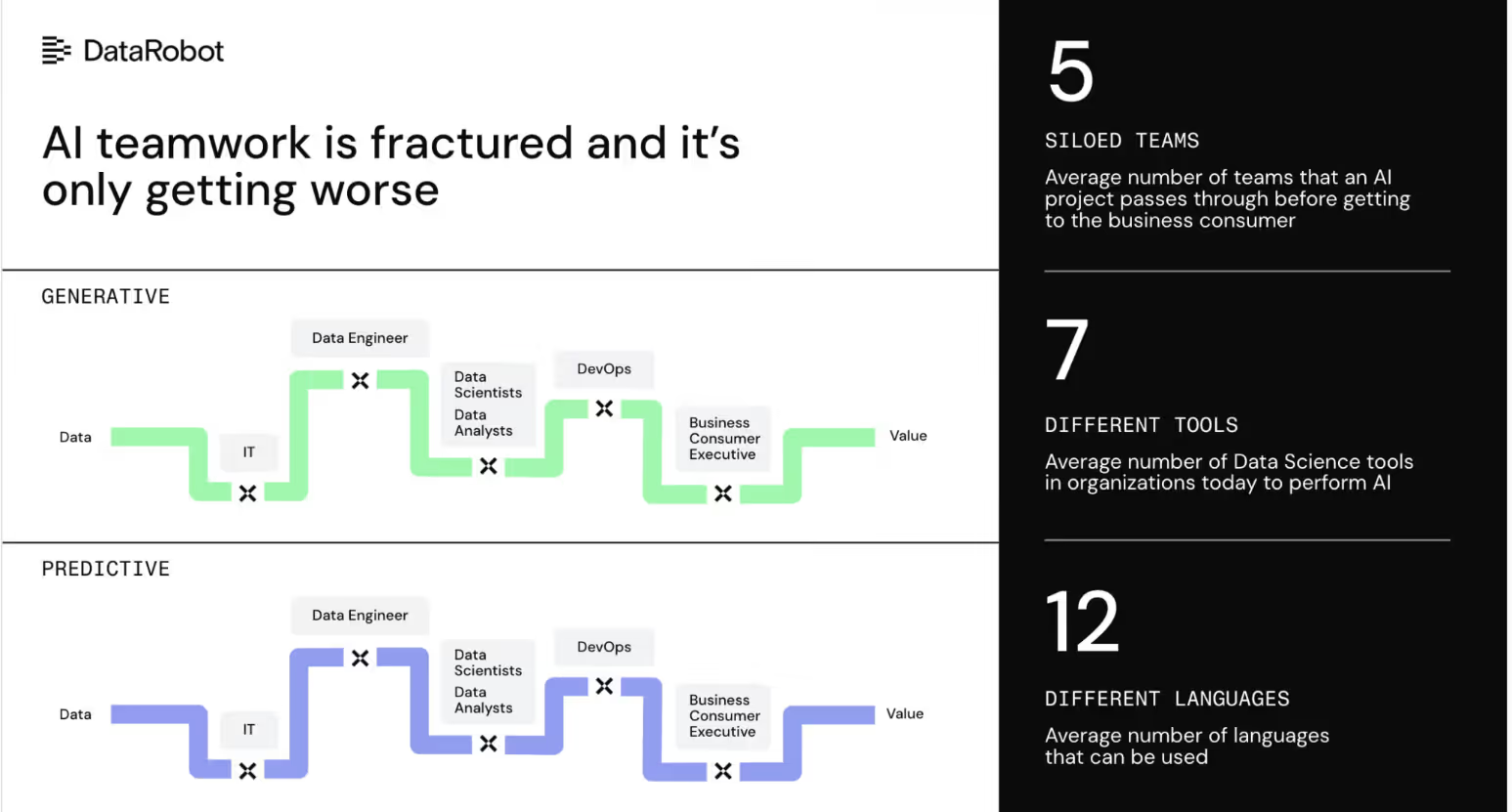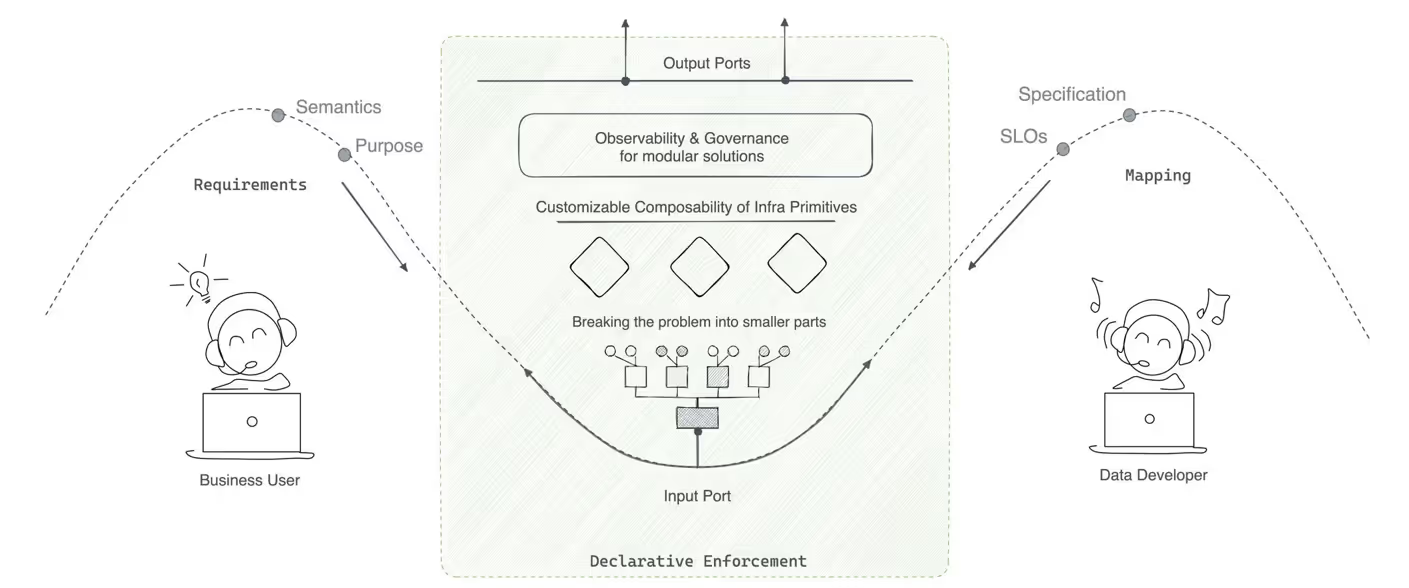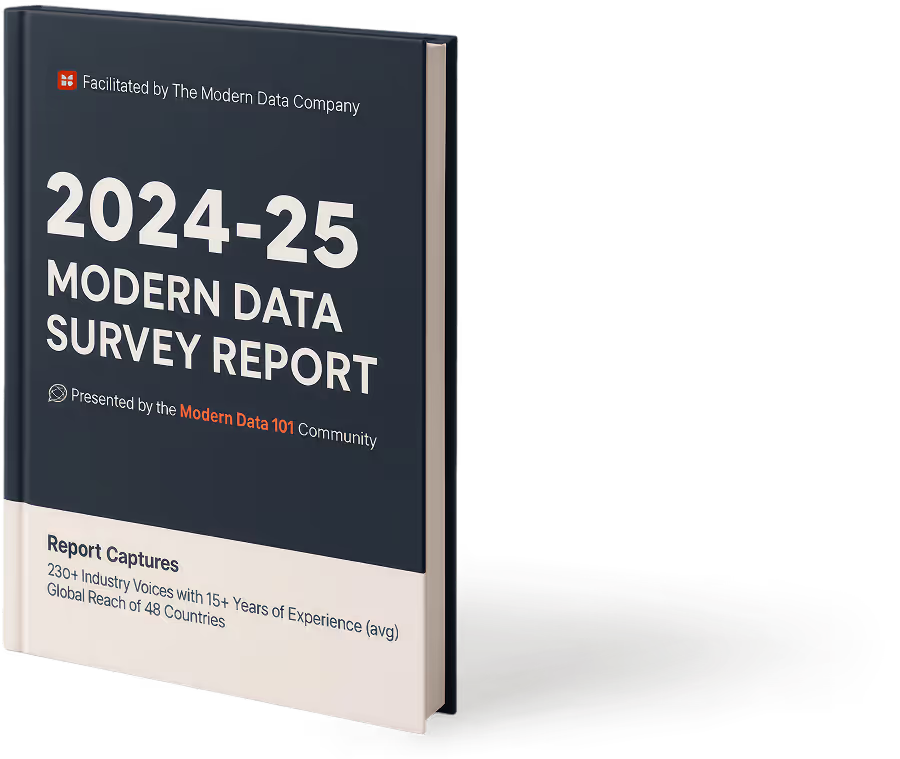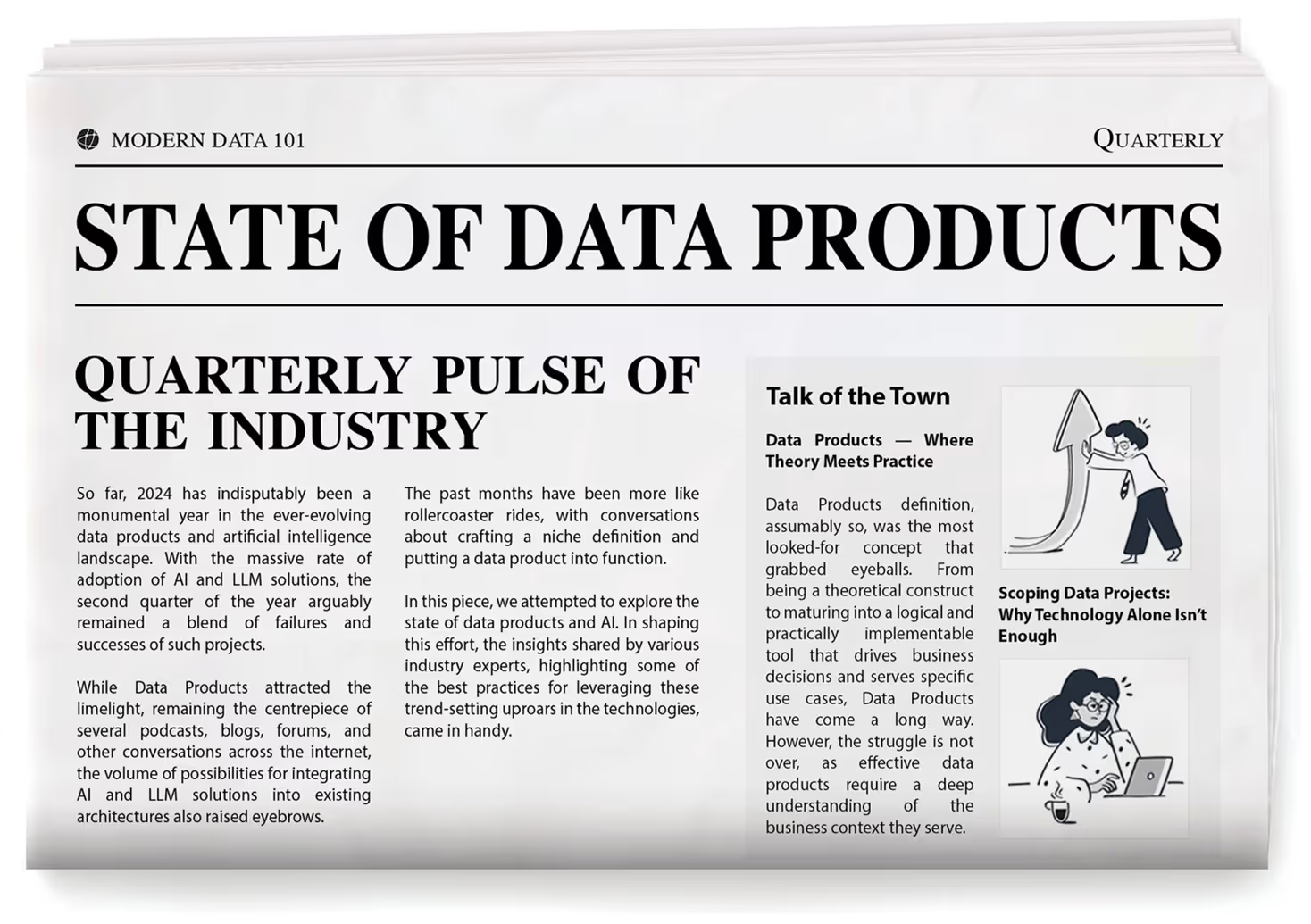
TL;DR
Last updated on 23rd October 2025
Introduction
Enterprises are becoming increasingly driven by AI these days, resulting in blurred lines between AI and data teams. However, this unification is not always harmonious. While both data and AI teams are crucial in building production-driven and scalable AI systems, a lack of alignment between them leads to redundant efforts, expensive reworks, and even failed experiments.
One primary requirement of AI teams is having data that is rich in context, reaches them in a timely manner, and boasts of high quality. This falls in the responsibility area of data teams, but they struggle to fulfil this requirement, due to fragmented tooling, lack of clear priorities, and corrective action only after issues.
This gap between AI and data teams impacts the flow of positive AI initiatives, where they struggle to move past the prototyping stage. The need of the hour is a strong foundation, singular in its approach, and one that encourages shared ownership, clear understanding, and a secure access to reusable data assets.

The Real Problem: Why AI and Data Teams Struggle to Work Together
Deploying impactful AI solutions might be a goal that both data and AI teams share, but they also find themselves pitted against each other a lot of the time too. This happens because there is a lot of difference in workflows and tooling. While AI teams work in agile and experiment-focused ecosystems, data teams focus more on governance, structure, and reliability.
It creates chaos in the enterprise, where speed and iteration collide with compliance and quality. To add to the woes, there is absolutely no shared context or documentation between teams, which breaks down any potential collaboration further.

Such silos between data and AI teams make it almost impossible to scale AI beyond pilots. More than seamless collaboration, there is a need to get a shared infrastructure to bring automation, reusability, and transparency to the AI development lifecycle. This is where a data product platform comes in, offering modular building blocks and a common language so that both teams can work as a single integrated unit.
7 Ways to Bridge the Gap Between AI and Data Teams
Cutting the gaps between data and AI teams is no longer something that ‘can be done’, but is now a crucial element from a strategy viewpoint. Organisations across the world are investing heavily in AI initiatives, which is clearly mentioned in this Stanford report, but still, a lot of them struggle with operational discrepancies between the people managing data and those actually creating AI solutions.
To ensure that such things are taken care of, given below are seven ways to provide data and AI team alignment:
1. Shared Ownership Across Data Assets
More often than not, data is just sent across from one team to another with limited context, brittle models, and misalignment in expectations. To ensure this doesn’t happen, shift to co-ownership of data assets. Data powering AI needs to be treated as a product, which is properly versioned, well-documented, tuned for production, and reusable across various use cases.
Shared ownership enables both teams to have a say in the game, with alignment on standards for freshness, quality, SLA-driven access, and lineage.
2. Early Alignment on Use Case Requirements
One of the significant reasons why AI initiatives fail is that the model development starts without a proper understanding of data feasibility. Breaking silos in AI projects involves teams being included early on to determine what data exists, what the missing pieces are, and what aspects of this data need some enrichment or transformation.
This joint assessment cuts down the risk of building without clarity. Designing features and pipelines in collaboration reduces the frequency of feedback loops and helps in better time-to-value realisation.
3. Standardised Documentation and Metadata Practices
When AI teams find it challenging to understand the data they work with, it leads to issues with trust and usability. The solution here is standardised documentation and metadata practices. Implementing standard schemas, data contracts, and consistent lineage allows stakeholders to have the context they need.
Metadata should also include everything, from data freshness to usage guidelines, so that teams spend less time chasing clarity and more time creating something of value.
4. Self-Serve Access to Trusted, Curated Data
Manual ticketing systems often slow down the pace of AI teams and irritate data teams. The ultimate objective should be to ensure self-serving access to datasets that are already compliant, governed, and ready for production. With a good enough data product platform, this complexity can be easily taken care of with policy-compliant data products that can be plugged directly into AI teams.
With the right quality metrics, access control, and lineage in place, data consumers can move quickly, and this shift allows a significant reduction in bottlenecks while also ensuring proper governance.
5. Integrating Model and Data Lifecycle Management
In a lot of organisations, model workflows and data pipelines are independently managed, which creates tentative boundaries in a way that as soon as the data changes, the model breaks down, and when models require new features, the pipelines start to fall behind. For AI enablement through data to become a reality, it means treating model and data evolution as parts of a single, integrated lifecycle.
For this, enterprises can use dependency tracking, versioning, and other CI/CD practices encompassing both models as well as datasets. A properly integrated lifecycle also cuts down on retaining costs from unexpected degradation of models.
6. Using Metrics to Assess Collaboration Health
Measurements lead to improvements. Rather than tracking data freshness and model accuracy, metrics that reflect data and AI team alignment. These metrics include pipeline failures, time-to-handoff, retraining issues, and the to-and-fro frequency between teams.
These indicators reflect various friction points that might not be visible in conventional dashboards but are crucial to ensure operational maturity over time.
7. Workflow Centralisation on a Unified Platform
AI and data workflows reside in disconnected tools, and this fragmentation leads to a lot of miscommunication and inefficiencies. A good approach is to centralise all collaboration on a unified data product platform, where both teams can develop together, test, version, and monitor their assets.
It creates a single source of truth, consistent observability, and aligned governance models across the entire AI data lifecycle.
Centralised workflows also help in ensuring transparent dependencies so that scalable data practices for AI become a reality.
With these seven strategies and their adoption within the enterprise, bridging the gap between AI and business data not just improves collaboration, but also accelerates the process of generating better outcomes. The biggest win is when both data and AI teams work alongside a shared product mindset, enabling scalable, agentic AI across the board.
How a Data Product Platform Makes This Collaboration Possible
A data product platform helps bridge the AI-data divide by offering governed, reusable data products that all teams can trust and use independently. AI teams get self-serve access with metadata, lineage, and policy enforcement built in. Domain experts can collaborate without worrying about infrastructure. And data engineers can focus on scalability rather than firefighting.
With unified access and zero tool stitching, it becomes easier to reduce friction, accelerate development, and deliver real AI outcomes together.

Frequently Asked Questions (FAQs)
Q1. Why do data and AI teams struggle to ensure effective collaboration?
It has more to do with the priorities that each team has. Data teams focus more on reliability and governance, while AI teams’ areas of focus are speed and experimentation. Apart from priorities, siloed tools, unclear asset ownership, and manual handoffs also make things challenging. As a result, productisation becomes tough.
Q2. How does a unified data platform bridge this gap?
A unified data platform centralises aspects such as documentation, workflows, and version controls for both data and AI assets. It does away with tool fragmentation, drives consistent governance across lifecycles, and makes for transparent dependencies.
Q3. How does shared ownership improve AI data outcomes?
AI and data team collaboration and ownership help turn data into a production-grade, reusable asset rather than just a deliverable. With a joint setup of governance rules, quality standards, and SLAs, data and AI teams become accountable for usability and reliability.



Author Connect 🖋️

Simran Singh Arora

Simran is a content marketing & SEO specialist.
Simran is a content marketing & SEO specialist.









